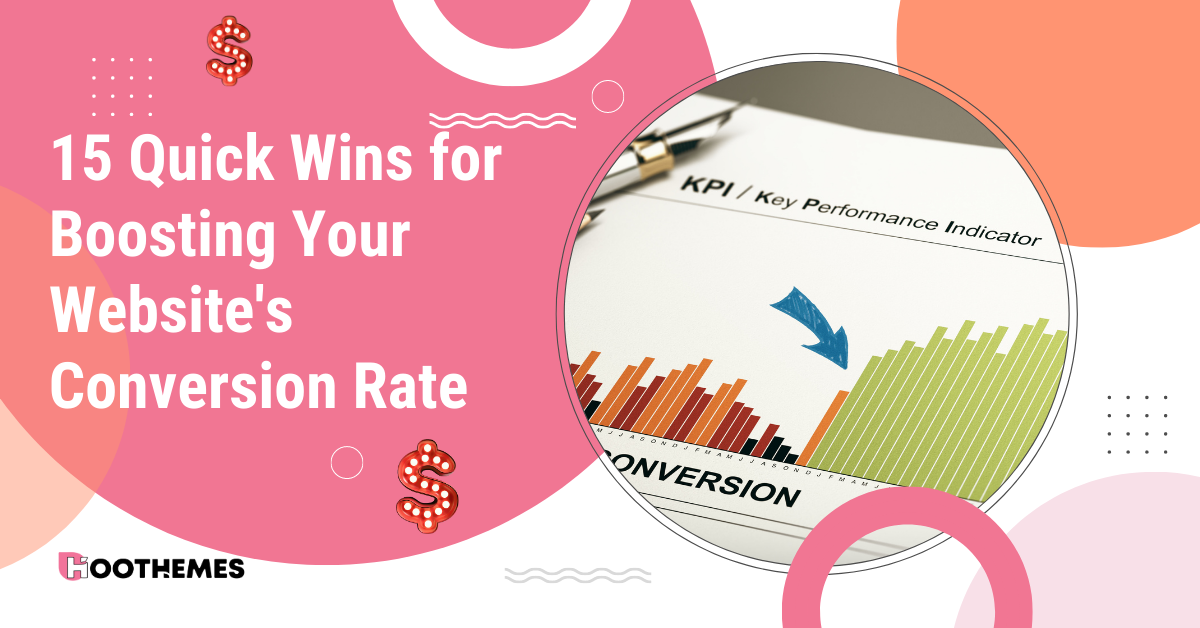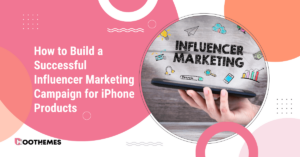A good website is one which meets the needs of visitors, while also serving the business it represents effectively by converting new arrivals into loyal customers.
Conversion rate optimization (CRO) is something to take seriously as a result, but it’s also a process that can seem tough to implement, let alone master.
Luckily there are quite a few ways to enhance CRO without tearing your hair out or having to wait a long time to feel the benefits. Here are just a few tactics to try if your site’s conversion rate isn’t up to scratch.
Leverage the Power of Video Content
At the core of all conversion rate tweaks is the idea that you need to capture and keep your customer’s attention ASAP. One way to do this is by leveraging the power of video content on your website.
Videos are an engaging format that allows you to quickly and easily communicate key points, explain complex topics in simple terms, or showcase products in action. Additionally, videos can be used as part of a larger marketing strategy with social media campaigns or email marketing initiatives. So by using videos effectively on your site, you can increase user engagement and boost conversions significantly.
Utilize Exit-Intent Popups
By utilizing exit-intent popups on your site, the aim is to retain users who are about to leave the page. These popups display when a user is about to click away from your site and offer discounts or other incentives that could potentially drive them back into making purchases, signing up to your mailing list, or performing whatever other action you’re driving towards.
Of course, there’s always the fear that popups can be intrusive, but in this case, they are a legitimate last-ditch option since they only arise when a visitor has already shown their intent to head elsewhere anyway.
Make Your Landing Pages Stand Out
Making a good first impression means everything in a CRO context. One way to do this is by creating an effective landing page that stands out from your competition. With this approach, those snap judgments that prospects make when they arrive on your site will fall in your favor.
When crafting your landing pages, make sure to include compelling visuals and concise copy that accurately conveys what products or services you offer, along with any unique selling points. Don’t be afraid to look at rival sites for inspiration, as well as to see the shortcomings of certain techniques.
It’s also important to ensure that the page is well-structured so customers can easily navigate around and find exactly what they are looking for. There’s a balance to strike here, as you don’t want to overload the page with info and interactive elements, but you equally want to avoid it being too sparse and minimalist in terms of what it offers.
You might even consider creating an entirely separate domain to give landing pages for things like product launches an additional chance of grabbing the attention of prospects. You can find a domain name by using NameHero’s tool, and explore this avenue for your next major campaign.
Increase Social Proof with Testimonials and Reviews
Customers often look for social proof before making purchases, both online and off. As such, leveraging the power of customer reviews and testimonials on your website lets you increase trust in your products or services, which should boost sales.
These types of posts are also great ways to showcase how happy existing customers are with their experiences. Make sure to include relevant information, such as customer names and photos, along with product details so potential buyers have an easier time understanding what others think about it.
Use Clear & Concise CTA Buttons
Conversions won’t move in the right direction if you aren’t setting out to guide customers to take action with on-page elements.
This is where using clear and concise call-to-action (CTA) buttons on your website comes into play, as it can increase user engagement significantly.
Of course not just any CTA will do. Make sure that your CTAs are easy to find, as well as straightforward in their composition, so users know exactly what they need to do in order to achieve their desired outcome.
Check that these buttons stand out from other content by using contrasting colors, or even adding animation effects. Any part of the page that catches the eye in this way will have a much higher likelihood of earning that all-important interaction from visitors. In fact, it’s key to the overall quality of the site’s user experience.
Simplify Your Forms for Optimal User Experience
Speaking of UX, you must be sensitive to the fact that lengthy or complicated forms on your website can be off-putting to customers. To increase conversions and provide users with the best experience possible, it is wise to simplify these forms, trimming the fat without compromising on their functionality.
Only include questions that are relevant and necessary, and avoid asking for too many personal details, because this could lead potential buyers away from your site altogether.
Moreover, form fields should be clearly labeled so users know exactly what information they need to enter. The easier it is to understand what a form involves, and the fewer interactions required on the part of the visitor, the higher the chance you’ll convince them to fill it out.
Speed Up Page Load Times to Reduce Abandonment
A website that is slow to respond is one that will lose the respect of newcomers and loyal customers alike. So if conversion rates are currently not where you want them to be, but you think you’ve nailed things like landing page design, then look into page load speeds and start troubleshooting.
To ensure your website performance is optimal, conduct regular maintenance on your site, as well as optimize any images or videos that are used. The less data that needs to load in when a page is accessed, the faster it will appear on customer devices.
Additionally, make sure the hosting provider you use is reliable. This will help reduce downtime significantly, and also guarantee that the infrastructure that underpins your website is using the latest hardware and networking capabilities to turbocharge performance.
Optimize Checkout Processes With Automation
It’s not just things like form-filling and page load times that need to be optimized to avoid harming the reputation of your website. The checkout process must be customer-friendly, without requiring too much manual oversight by your team.
One way to do this is by using automated solutions such as payment gateways or order fulfillment systems. This will help streamline processes and make the entire experience more efficient for buyers.
Automation can also be used to handle customer service inquiries faster. This will ensure that any issues are resolved quickly and efficiently, and again means that you won’t have to dedicate any human staff to tackle everyday FAQs that stand between visitors and a conversion.
Create Urgency Through Special Offers or Deals
If there’s an element of time sensitivity to the landing pages you put together, then prospects are less likely to hold off on pulling the trigger on a purchase until later.
This is where offering special deals and discounts on select products or services makes sense, as potential buyers will want to take action before these offers expire.
As well as increasing conversions, this strategy can also help enhance customer loyalty as well. For instance, by giving users exclusive access to certain items when they take advantage of an offer, they are more likely to return in the future.
Update Visuals and Copy Regularly
Keeping content fresh is essential in order to keep customers engaged. Conversely if you stick with the same old landing pages month after month and year after year, there will be less reason for visitors to come back and convert again.
So, to ensure your site remains interesting for users, you need to update visual elements and copy regularly. This could mean changing the design of certain pages, or updating product descriptions with new information.
Any changes made must be consistent across all channels, so there is no confusion between what customers see on-site compared to other platforms such as social media or email marketing campaigns.
Segment Audiences Based on Behavioral Data
Personalizing your website for each visitor is another impactful tactic when it comes to giving your conversion rates a shot in the arm.
To do this effectively, you can segment audiences based on their past behavior. This will allow you to tailor content specifically for different types of users, and provide them with an engaging experience that is more likely to lead them down the sales funnel.
Utilizing behavioral data such as purchase history or page visits also allows you to create targeted campaigns, which is another string to your bow in terms of conversions. It’s a case of ensuring that the right people find your site in the first place, rather than spreading your message too far and attracting the wrong audience as a result.
Give Users Multiple Payment Options
In addition to having a slick, automated checkout process, you have to be aware that conversions can be adversely influenced by a lack of choice when it comes to making payment.
By offering more than one option for buyers to complete their transactions, businesses can provide customers with greater flexibility. In turn, giving shoppers various choices here also helps boost overall customer satisfaction, which bodes well for the long term loyalty of the people you do manage to convert.
From traditional payment card support, to options for using reputable online payment platforms, make sure you’re able to accept an array of methods, even if this does mean that your costs increase slightly.
Implement A/B Testing to Find a Path Forwards
A tried and tested way to pinpoint the most suitable solutions for CRO is using A/B testing. This strategy allows businesses to compare two versions of their landing pages, or their entire site, and see which one performs better with customers.
By conducting regular tests, marketers can quickly identify areas that need improvement, or changes that could potentially have a positive impact on conversion rates.
These types of experiments are also great ways to come up with new ideas or strategies too. So don’t be hesitant about trying things out, but be bold enough to embrace innovations and see whether they play out as expected, or need tweaking before they’re ready for the big time.
Enhance Onsite Search
Another of the aspects that’s at the core of an optimal user experience is the search functionality that your site provides visitors.
It needs to be able to quickly and easily pinpoint relevant pages and content, so that would-be customers can find what they are looking for in a moment.
Once you’ve implemented a modern search feature, make sure the search bar is prominently placed on pages, such as product categories or any other area where customers might be looking for information. By doing this, you will be able to reduce friction, and remove the number of steps it takes for a customer to convert.
Prioritize Mobile Users
Last but not least, there is no denying that most people who will arrive on your site today will do so using a mobile device, rather than relying on a laptop or desktop with a larger screen and a mouse and keyboard at their disposal.
This necessitates mobile optimization, not only in terms of things like page load speed, but also in terms of the overall design of the website.
Responsive web design is a long standing discipline by this point, which is good news, because you won’t have to reinvent the wheel to appease mobile users. However, there are still complications to overcome, such as factoring in the likelihood of hosting users who are spread across all sorts of different handsets and operating systems. Testing performance on as many different hardware and software configurations as possible is part of CRO in the mobile-first era.
Key Takeaways
The overarching message here is that to improve conversion rates, you need to be thinking about the user experience first and foremost. While the technical trickery of SEO might help to search algorithms, once a flesh and blood customer is on your site, they have to enjoy it. Making these changes and optimizations is a start, but you also need to keep monitoring and improving your site over time to sustain its momentum.









